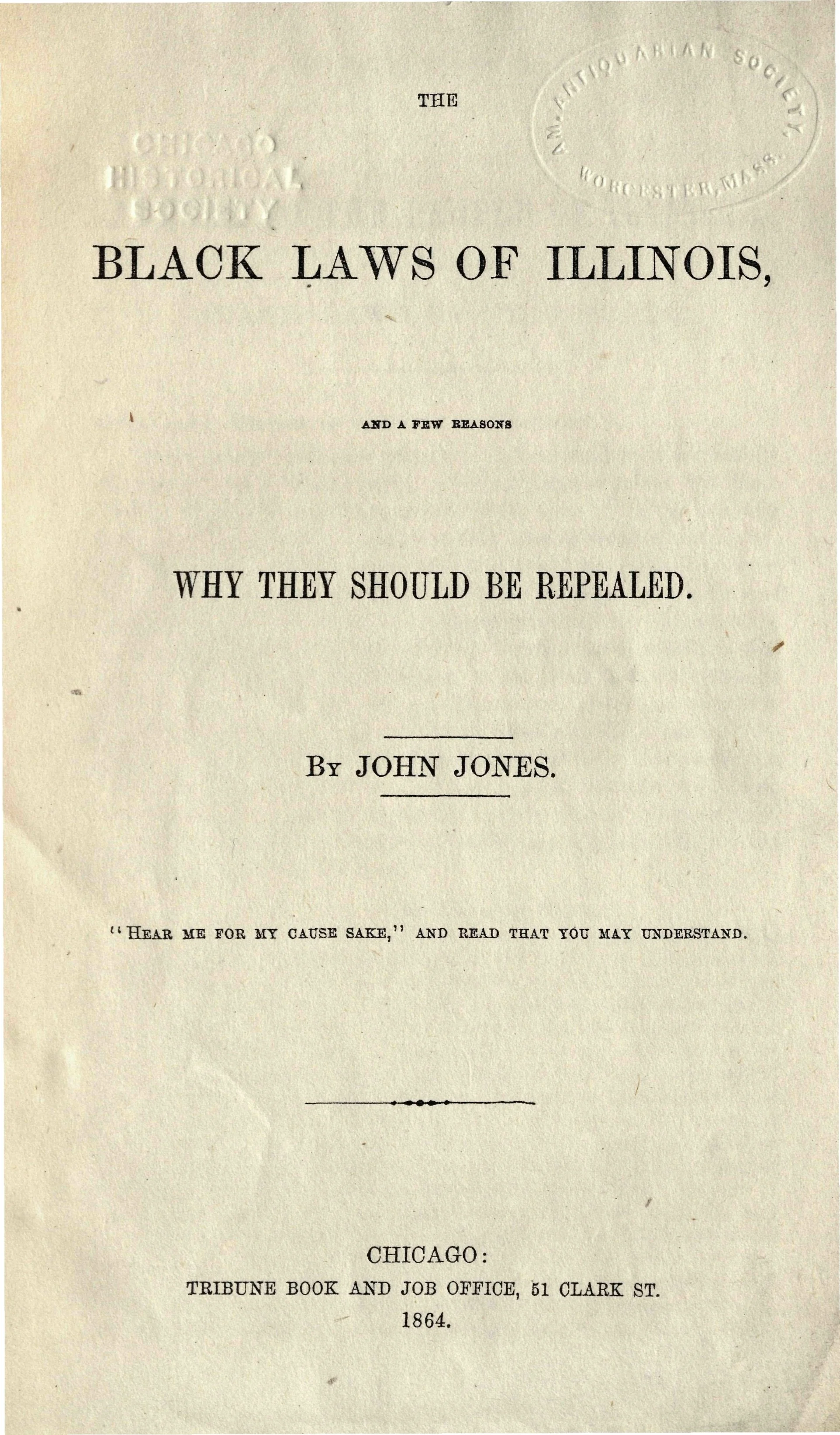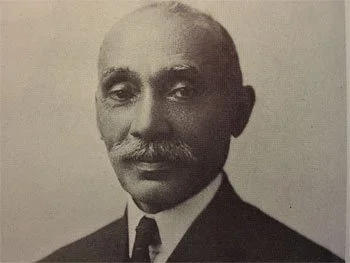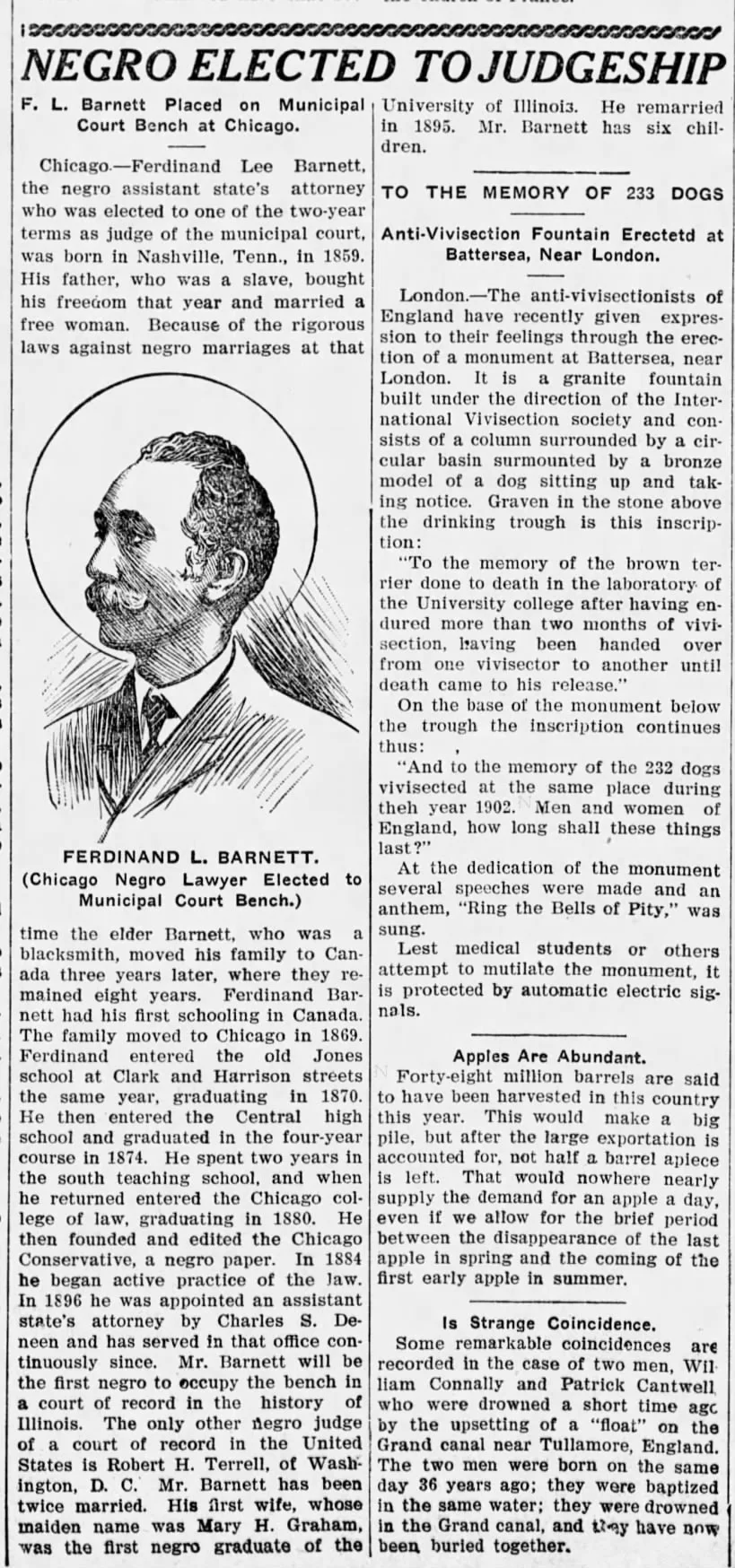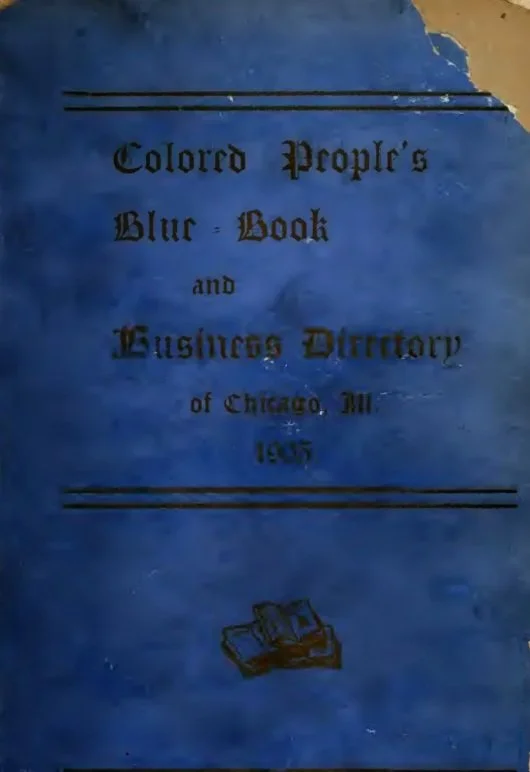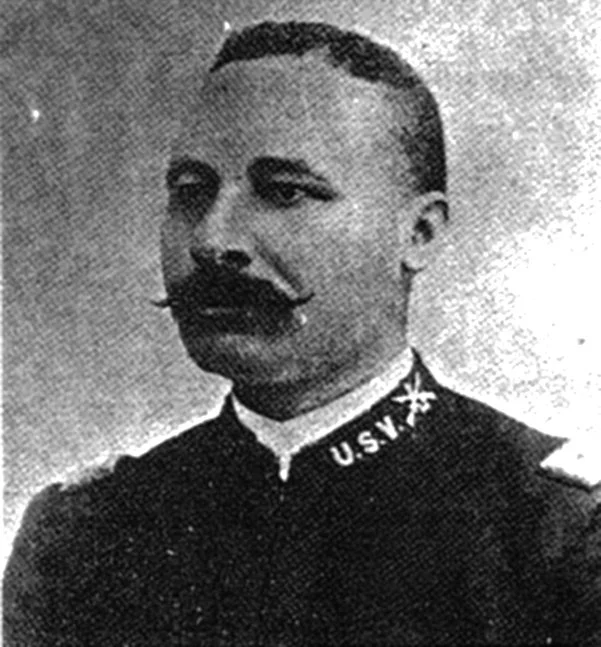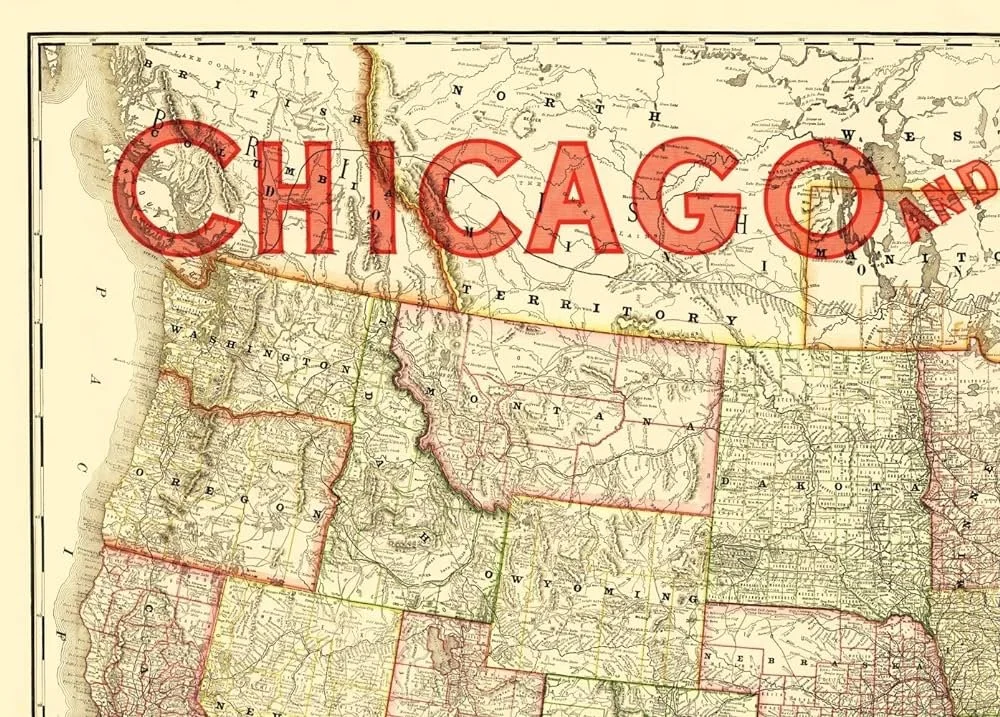A Brief History
of the CCBA
The history of Black men and women working to mold and shape the law in order to improve the quality of their respective lives in this state began in 1869 with Lloyd G. Wheeler’s admission to practice law in Illinois. His admission began a tradition of dedicated and distinguished service by Black lawyers to the community. Lawyers serving as advocates, judges, legal educators, elected and appointed representatives participated in every level of government to protect, defend lives, rights, and the well-being of all citizens, but particularly Black citizens.
The seeds of the Cook County Bar Association were planted after 1896, when 32 Black lawyers began to meet informally to plan protests against discrimination in hotels, theaters, and restaurants, and to address judicial elections and school desegregation. Among the group of Black lawyers was Ida Platt, the first Black woman admitted to practice in the State of Illinois, and the 3rd Black Woman Lawyer in the nation. This informal collaboration lasted until 1914, when the younger generation of lawyers decided to form the Cook County Bar Association. Edward H. Wright was elected the first CCBA president. On March 5, 1920, the CCBA was formally incorporated by the State of Illinois.
In 1925, CCBA members C. Francis Stradford, Wendell E. Green, and Jesse N. Baker were among the founders of the National Bar Association (NBA). As one of the NBA’s oldest and largest affiliates, the CCBA has hosted the NBA annual meetings on many occasions. The 71st Annual Meeting in Chicago in 1996 is still recognized as the most successful Annual Meeting in the history of the NBA.
Advocating for Equality and Justice
Historically, the CCBA has engaged in a variety of legal programs to advance the legal profession and its members. One of its most important contributions was the development of an organized system for the fair and impartial evaluations of judicial candidates which led to the joint alliance with other minority bar associations.
Centennial Milestones
1914-1940
The COOK COUNTY BAR ASSOCIATION (CCBA) was formed at a time of rapidly changing demographics. Black people left the farms and rural areas of the south to join the military forces of World War I, and to respond to the labor demands of a wartime economy. Between 1916-1919, the Black population of Chicago grew by 50,000 persons. The migration greatly expanded the market for businesses, created demand for housing, and laid the foundation for increased political muscle. Black lawyers, while not accepted for membership in the Chicago Bar Association, occupied a position of civic leadership within the Black community. The lawyers recognized as all of our Black professional organizations that they had to join forces to serve, develop, and promote their own interests. Historians and sociologists have described this period as a time of rising racial consciousness that affected and unified all classes of Black society. It is in this period of rising racial consciousness that the COOK COUNTY BAR ASSOCIATION was formed.
-
George W. Ellis, Richard E. Westbrooks, James G. Cotter, and members of the local bar met at the Wabash YMCA at 38th Street and Wabash and organized the Cook County Bar Association.
-
The newly formed Association met and elected officers. Elected were: Edward H. Wright, President; Richard E. Westbrooks, 1st vice president; Albert B. George, 2nd vice president; Richard Hill, 3rd vice president; George W. Ellis, Secretary; Harrison H. Farrel, Treasurer. Executive Council: William L. Martin, Augustus L. Williams, and James N. Simms.
-
The Association held their General Membership Meeting on the 1st Friday in March 1915, at the Wabash YMCA, at 38th Street and Wabash.
-
Oscar DePriest was elected 1st Black Alderman of the 2nd Ward. Robert R. Jackson and Sheadrich B. Turner were elected State Senators from the 2nd Ward.
-
Edward H. Wright and Louis B. Anderson were appointed assistant corporation counsels by Mayor William Hale Thompson.
-
Louis B. Anderson elected Alderman of the 2nd Ward.
-
After a continuous string of assaults on the streets and in their homes and workplaces, Blacks fought back. The results were the July 1919 riots. CCBA members were selected to appear and defend Blacks charged with crimes.
-
CCBA was incorporated. The incorporators were: Chester W. DeArmond; Edward H. Wright; Henry M. Porter; Benjamin G. Pollard; James A. Terry; Willis E. Mollison; Richard E. Westbrooks; Alva L. Bates; and Oliver A. Clark.
-
A group of blacks formed the Protective Circle of Chicago, an ad hoc civil rights group aimed at securing justice in the courts and on the streets. It was a Black legal response to the lack of action by the Police Department and the Cook County State’s Attorney’s Office to the intimidation, bombing, threats and coercion suffered by Blacks who moved into white areas. The command center for the Protective Circle was 3140 S. Indiana, the headquarters of Oscar DePriest.
-
The 1919-1920 edition of Black’s Blue Book listed 1200 Black owned businesses, which included 5 banks, 48 real estate offices, 106 physicians, 40 dentists, 70 lawyers, 3 insurance companies, 5 hotels, and 111 newspapers. In 1923, the number of lawyers increased to 81.
-
The area known as the Black Belt became the nucleus of The Black Metropolis. The boundaries were described as 22nd Street on the north; 55th Street on the south; Wentworth Avenue on the west; and Cottage Grove on the east.
-
Edward H. Wright elected Republican Ward Committeeman of 2nd Ward.
-
Albert B. George elected as the first Black judge in the Municipal Court. George was elected on the Republican ticket.
-
A delegation headed by CCBA President Champion T. Waring traveled to Des Moines, Iowa and formed the National Bar Association.
-
The CCBA Grievance Committee began to administer complaints filed by citizens against CCBA members.
-
The CCBA hosted the 2nd annual meeting of the National Bar Association.
-
CCBA President C. Francis Stradford rented permanent headquarters at 4500 S. Michigan, and equipped the headquarters with a law library.
-
The Grievance Committee of CCBA successfully prosecuted proceedings to disbar two members of the Association.
-
The CCBA hosted the 4th annual meeting of the National Bar Association.
-
CCBA President A.M. Burroughs organized a ladies auxiliary to the Association, to assist in arranging the entertainment for delegates attending the National Bar convention.
-
Oscar DePriest elected to Congress from the 1st Congressional District of Illinois.
-
The CCBA Auxiliary hosted a reception lawn party in honor of Cong. And Mrs. Oscar DePriest.
-
During the term of CCBA President A.M. Burroughs, CCBA created a judiciary committee to investigate and recommend candidates for endorsement by the Association.
-
The Association held monthly meeting and featured speakers on law related topics.
-
Louis B. Anderson served as Alderman of the 2nd Ward from 1917-1933; William L. Dawson served as Alderman of 2nd Ward from 1933-1939; Earl B. Dickerson served as Alderman of 2nd Ward from1930-1943; Robert R. Jackson served as Alderman of 3rd Ward 1923-1933.
-
CCBA President Herman Moore appointed an assistant commissioner of the Illinois Commerce Commission.
-
CCBA President Alva L. Bates appointed attorney for the receiver of the Douglas National Bank.
-
CCBA President William K. Hooks appointed a CCBA committee to investigate the procedures employed by the Chicago Police Department in obtaining a confession from Ruffo Swain. The investigation team was led by Atty. Henry C. Ferguson, Irvin C. Mollison, and Joseph J. Atwell, Jr.
-
Mitchell v. United States, 313 US 80. Action brought by Cong. Arthur Mitchell, and joined by Atty. Richard E. Westbrooks. While traveling interstate on a train toArkansas, Mitchell was a victim of discrimination. Mitchell and Westbrooks filed a claim before the Interstate Commerce Commission against the Chicago and Rock Island Railroad. The claim was denied. The ICC decision was reversed in the U.S. Supreme Court.
-
CCBA President Earl B. Dickerson served on Pres. Roosevelt’s Fair Employment Practices Committee, and as a member of Governor Horner’s Committee on Urban Condition of Negroes. Dickerson also made the presence of the bar felt at the Chicago Urban League and the NAACP. Dickerson was instrumental in the decision to form the Legal Defense Fund as a separate legal arm of the NAACP. The Legal Defense Fund would go on to spearhead major civil rights litigation.
1940-1970
1940 saw the end of the Great Depression and the beginning of WWII. Because war time production had priority on building materials, no new housing was being built. The pent up demand for housing would not begin to dissipate until after 1948. Although the 1948 Supreme Court ruling in Shelley v. Kraemer rendered racially restrictive covenants legally unenforceable, the FHA regulators followed their own policy stating that Shelley did not affect the programs of their agency.
-
Hansberry v. Lee, 311 US 32. A case involving racial restrictive covenants. Argued on a procedural matter before the U.S. Supreme Court. Atty.’s Earl B. Dickerson, Truman K. Gibson, C. Francis Stradford; Loring B. Moore; Irvin C. Mollison.
-
Past president Herman Moore appointed a judge in the U.S. District Court in the Virgin Islands.
-
Atty. Patrick B. Prescott, Jr., appointed to the Municipal Court to fill an eleven month vacancy. But the appointment caused controversy and Prescott served only four days on the bench.
-
Atty. Wendell E. Green elected to the Municipal Court and was re-elected in 1948, 1951 and 1957.
-
Irvin C. Mollison appointed by Pres. Truman to the U.S. Customs Court.
-
James A. McLendon first Black appointed a Master in Chancery.
-
Fred Duke Slater elected to the Municipal Court.
-
Out of frustration with the paucity of judicial appointments, prominent Black lawyers and Past Presidents for the CCBA ran on a slate of the Progressive Party. Earl B. Dickerson, Richard E. Westbrooks, Sidney A. Jones, Jr., and Henry C. Ferguson ran for judge.
-
Fred Duke Slater was re-elected to the Municipal Court.
-
CCBA Past President Henry C. Ferguson elected judge in Municipal court.
-
William Bob Ming joined the Legal Defense Team on Brown v. Board of Education.
-
Judge Fred Duke Slater elected to the Superior Court.
-
CCBA Past President Sidney A. Jones, Jr. elected judge in Municipal Court
-
James B. Parsons elected to the Superior Court.
-
CCBA President B. Toles, historian and chronicler of CCBA and NBA history, increased the pressure to elect and/or appoint more Black judges. Pres. Toles published the Cook County Bar News, lifting up the achievements of Black lawyers. Portions of the newsletter were read in the Congressional Record by Cong. Barrett O’Hara.
-
CCBA hosted the Midwest Regional Conference of the National Bar Association.
-
James B. Parson, judge of the Superior Court, appointed the first Black U.S. District Court Judge by President Kennedy.
-
George N. Leighton elected judge of the Circuit Court. In 1969, Judge Leighton became the first Black jurist appointed to the Illinois Appellate Court.
-
By June 1965, Chicago had 16 Blacks in the judiciary.
5 Circuit Judges: Fred W. Slater; Richard A. Harewood; James D. Crosson; William S. White; and George N. Leighton.
3 Associate Judges: Sidney A. Jones, Jr; Edith S. Sampson; Mark E. Jones
8 Magistrates of Circuit Court: Richard Gumbel; Ernest Greene; Alvin Turner; Maurice Pompey; George Blakey; Edwin C. Hatfield; and E.C. Johnson.
-
In the period following the assassination of Dr. Marin Luther King Jr., CCBA members found themselves fighting from within and without the criminal justice system. Members were shocked by the shoot to kill, and shoot to maim directives issued by Mayor Daley. CCBA President William E. Peterson called for the courts to be open over the weekend and asked that CCBA members show up to defend members of the Black community being held with excessive bail and/or without being charged. Atty.’s James D. Montgomery and Lawrence E. Kennon had to “crash’ the meeting called by the presiding judge of the criminal division, to decide the procedures to be followed during hearings for 2000 people arrested during the rioting. Orders had been issued specifically barring CCBA from attending the meeting. After a lengthy exchange between representatives of both groups, the CCBA lawyers were allowed to attend the meeting. Of note, present at the meeting were representatives from the state’s attorneys’ office; the public defender’s office; and magistrates slated to preside over the hearings. Atty. Montgomery was able to obtain an agreement that persons represented by CCBA members could have any CCBA attorney appear at the court status hearings. Other teams of CCBA members obtained the release of 1000 persons on bond; release of 500 persons through efforts of the United Appeal and the Community Legal Defense Fund; release of 600 people on writs of habeas corpus. The Chicago Riot Study Commission formed to examine the cause of the disorders, had in its membership, CCBA President, William E. Peterson, Judge George N. Leighton, and Ald. Ralph H. Metcalf.
-
CCBA Past President Edward B. Toles appointed a referee in bankruptcy, the first Black in the Northern District of Illinois, and the 2nd Black referee in the country.
-
The CCBA Old Guard had grown very conservative in its politics and on other issues. The young ‘maverick’ group ran a slate of officers. The mavericks led by Archie B. Weston advocated a posture of heightened militancy. Ellis E. Reid, the candidate of the Old Guard, was elected President. But the maverick group took the 1st, 2nd, and 3rd vice presidency slots and half the seats on the Board of Directors.
1970-2014
Lawyers who had come of age in the 1960’s learned their craft and ventured in to practice brought their ‘heightened militancy’ to all activities of the bar. Of utmost importance was the number of Black lawyers had grown. Women and men were graduating and becoming lawyer in record numbers.
-
After years of hearings, reports, investigations, on the conduct of the police and state’s attorney’s office in the raid on the Black Panther headquarters, the Democratic Party re-slated Edward V. Hanrahan for Cook County State’s Attorney. The response of the bar was heated. Ald. William Cousins, Ald. Anna Langford, and State Sen. Richard Newhouse said they would be in the forefront of a drive to oppose Hanrahan. CCBA Vice President Clarence Bryant said that it is an affront to Blacks that the Democratic Party would slate this man who is under indictment. The CCBA went on the offensive challenging Hanrahan’s abuse of the media and violations of the Code of Ethics.
-
In 1971, the CCBA transferred the activities of the CCBA Scholarship Committee to the CCBA Foundation. Foundation scholarships and grants were awarded on a needs basis. The CCBA envisioned the Foundation as a vehicle to expand the CCBA’s charitable efforts on a tax exempt basis.
-
Cecil A. Partee was the first Black elected as President of the Illinois Senate.
-
When Senator Charles Percy ‘snubbed’ the CCBA and failed to nominate any persons from the CCBA recommended list for District Court vacancies, the CCBA went on the offensive. A CCBA committee led by James D. Montgomery held a press conference and met in Senator Percy’s office to protest the ‘snub.’ CCBA officers went on radio, wrote letters, and denounced the actions of Senator Percy. In 1975, Senator Percy nominated Judge George N. Leighton for appointment to the U.S. District Court.
-
The theme of the CCBA’s 60th Annual Banquet (1974) was “A Tribute to the Black Judiciary.” The event honored 32 Black judges in the State of Illinois (four from downstate; and 28 from Chicago.).
12 Circuit Court Judges: Archibald J. Carey; James E. Crosson; Richard E. Harewood; William S. White; Sidney A. Jones, Jr.; Edith S. Sampson; Mark E. Jones; Kenneth E. Wilson; Albert S. Porter; Earl B. Strayhorn; Maurice Pompey; Russell DeBow.
12 Associate Judges: Alvin Turner; Earl L. Neal ; Edwin C. Hatfield; E.C. Johnson; James M. Walton; Willie Whiting; Charles J. Durham; Arthur N. Hamilton; William E. Peterson; Richard K. Cooper; Howard M. Miller; Marion W. Garnett.
2 Appellate Court Justices: George N. Leighton; Glenn T. Johnson
2 Federal Court: James B. Parsons; Edward B. Toles, referee in bankruptcy.
Downstate: Associate Judges: Billy Jones of East St. Louis; Ora Polk of East St. Louis; Louis Fontenant of Kankakee; Clayton R. Williams of Alton.
-
Judicial Evaluations. The CCBA examined 85 candidates on the November 1974 ballot and found nine candidates unqualified. Six of the nine unqualified candidates were up for retention.
-
The CCBA hosted the Annual Meeting of the National Bar Association.
-
President Chester Blair was the first CCBA President to participate in ceremonies of new Illinois lawyers. Blair participated in a state-wide commission to develop standards of professional conduct for lawyers. Blair would later serve as a Commissioner on the Attorney Registration and Disciplinary Commission.
-
President Arnette Hubbard elected the first woman President of the CCBA. Hubbard formed the Young Lawyers Committee; reinstituted the newsletter; worked for a permanent home and paid staff.
-
Arnette Hubbard, first woman president of CCBA, serves as the first woman president of the National Bar Association.
-
Harold Washington, a 2nd generation CCBA member, elected Mayor of the City of Chicago.
-
Mitchell Ware formed the law firm of Jones, Ware and Grenard, which would become the largest minority owned law firm in Illinois.
-
James D. Montgomery, past president of CCBA, appointed Corporation Counsel of City of Chicago.
-
Prof. Joyce A. Hughes becomes first woman and first black to be appointed General Counsel of the Chicago Transit Authority.
-
Ann C. Williams appointed first black woman judge of the U.S. District Court of the Northern District of Illinois.
-
CCBA hosted the National Bar Annual meeting with the theme “Come Alive in ‘85’. Fred Gray of Alabama (Mr. Civil Rights) was President of the National Bar Association. Mayor Harold Washington presented Pres. Gray with the keys to the city. In a spirit of good will, Jack Hayes, President of the Chicago Ba Association, presented a resolution grandfathering into membership in the Chicago Bar Association 50 year members who had been excluded from membership. At that annual meeting conventioneers were introduced to the first prayer breakfast; the NBA Hall of Fame; and the celebrated party of Atty. Willie Gary of Florida.
-
Randolph Stone appointed first Black Public Defender of Cook County. CCBA presented on the commission to screen candidates.
-
CCBA adopts “JUST SAY NO”- an initiative to deny retention of circuit judges. The result of Just Say No was that from the class of associate judge vacancies, 9 Blacks, 8 women and 2 Hispanics were elected associate judge, a record number of appointments.
-
CCBA participates in lawsuit challenging the at-large method of electing judges {Williams, et.al. v. State Board of Elections, et.al.}.
-
Cecil A. Partee, former legislator and President of Illinois Senate, appointed State’s Attorney for Cook County.
-
Chester Blair, a past president of CCBA, becomes the first Black elected President of the Chicago Bar Association.
-
A coalition of Republicans, Legislative Black Caucus, and Independents pass the Judicial Redistricting Bill creating the Judicial Sub Circuits, as a legislative solution to the issues raised in Williams et. al.v. State Board ofElections, et.al. Gov. Thompson signed the bill with the observation that the Republicans and legislative Black Caucus would work together on other matters of mutual interest.
-
Formed the CCBA/ARDC Liaison Committee under the guidance of Donald Hubert. The purpose of the Committee was to act as intervener when members of the Association faced discipline for issues arising out of lack of office management skills. The Committee became the prototype for similar intervention programs operated by other bar associations.
-
Expanded the scope of the CCBA Minority Job Fair to include corporations, government agencies, and law firms as well as opening the Job Fair to students from law schools in other states.
-
Justice Charles E. Freeman elected first Black jurist on the Illinois Supreme Court.
-
Hon. Carol Moseley Braun elected first Black Woman U.S. Senator from the State of Illinois.
-
Roland W. Burris elected Attorney General of State of Illinois.
-
CCBA co-sponsored fund raiser for Nelson Mandela to fund voter education for South Africa’s first democratic elections.
-
Past President Arnette R. Hubbard served as an election observer and advisor for the elections in South Africa.
-
John H. Stroger, Jr. became the first African American to be elected President of the Cook County Board of Commissioners
-
CCBA files amicus briefs.
-
CCBA hosts the National Bar Association 71st annual meeting and the Joint Council on Health, Law and Economics.
-
CCBA In-Court Bar Program approved by Chief Judge and CCBA attorneys gained appointments at selected courthouses.
-
CCBA establishes the Hall of Fame to recognize contributions of CCBA members to the community and profession.
-
CCBA co-founds the Alliance of Bar Associations for joint judicial evaluations.
-
Hon. Ann Williams appointed to the 7th Circuit, U.S. Court of Appeals by Pres. Clinton.
-
CCBA formed First Response Team to address political and prosecutorial issues in a timely manner.
-
Hon. Timothy C. Evans elected Chief Judge of the Circuit Court of Cook County.
-
Hon. Dorothy Brown elected Clerk of the Circuit Court, the first Black to hold the office.
-
CCBA conducted a series of town hall meetings on “Civil Rights in the 21st Century: Where we need to go 50 years after Brown.
-
CCBA files Amicus to Adopt Attorney Carl Walker’s Position.
-
CCBA participated in Constitutional Rights Program of Lawyers in the Classroom and adopted Calhoun Elementary School. CCBA members gave presentations, engaged the students, donated supplies, and served as mentors throughout the school year. CCBA participated in graduations and special events at Calhoun School.
-
CCBA hosts Hall of Fame II, saluting attorneys and judges who have practiced for 40+ years.
-
Held a Community Exposition with Cook County Bar Association Foundation.
-
CCBA Member, Sen. Barack Obama elected President of the United States.
-
CLE certified as an accredited CLE provider
-
CCBA hosted U.S. Supreme Court Forum to review 5-4 decision striking DC’s gun control statute as a violation of the 2nd Amendment.
-
Burr Oak Cemetery Task Force formed.
-
The In-Court Bar program expansion was launched.
-
Symposium to present Illinois Supreme Court candidates in a forum.
-
CCBA established the First Annual Minority CLE Conference in collaboration with other minority bars.
-
CCBA raised our voice against the closing of our adopted school, Calhoun North
-
CCBA established First Annual Toy Drive for La Rabida Hospital. CCBA elects four women as president, 1st, 2nd, and 3rd vice president.
-
On May 28, 2014, Mayor and City Council, present a Resolution to salute the Cook County Bar Association upon the occasion of its 100th Anniversary. CCBA elects four women as president, 1st, 2nd, and 3rd vice president for a second time.
still thriving
Over 99 years and counting…
The CCBA has been standing up for its lawyers and judges (Illinois Judicial Council) and, most importantly, the Black community, for over 99 years and it will continue to be a dominant force in the Chicago legal community for years to come.

